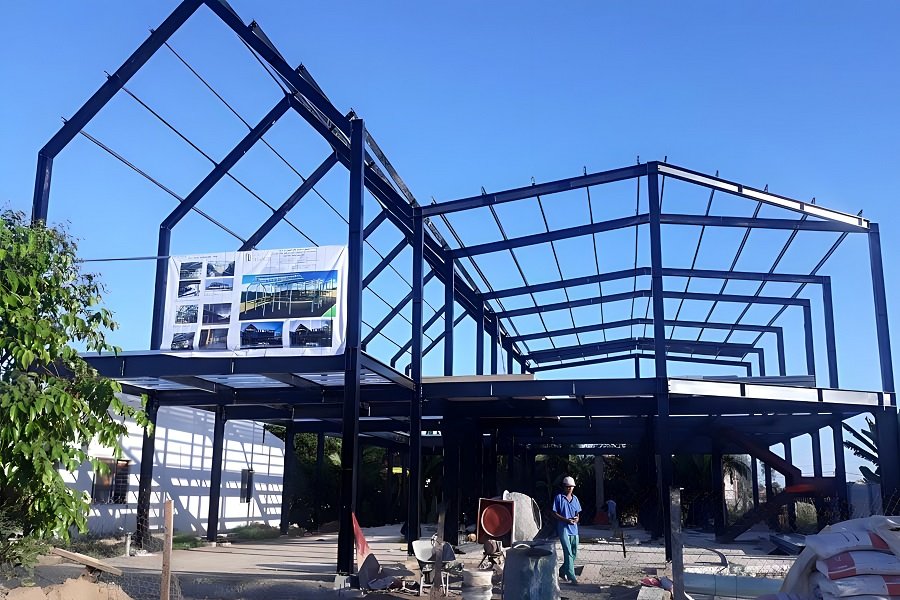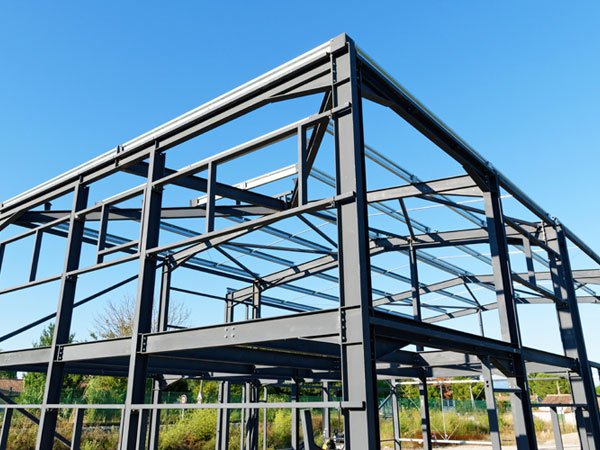Prefabricated Steel Buildings: Cost-Effective Construction Solutions
Discover the advantages of prefabricated steel buildings: cost-effective, eco-friendly, and flexible. Modern construction solutions for maximum efficiency.
Prefabricated steel buildings emerge as an innovative solution in the modern construction industry. This article provides an in-depth review of the concept, benefits, and reasons why these buildings are a cost-effective choice.
We will discuss the advantages of lightweight materials, prefabrication options, ease of maintenance, energy efficiency, and design flexibility.
Discover how prefabricated steel buildings can optimise your construction costs while maintaining quality and sustainability. Learn why more developers and project owners are turning to this efficient and economical construction solution.
1.What is a prefabricated steel building?
A prefabricated steel building is a structure whose main components are manufactured in a factory before being assembled at the construction site. This system uses steel as the primary material due to its high strength, durability, and flexibility. The prefabrication process involves designing, manufacturing, and assembling steel components in a controlled environment, ensuring precision and consistent quality.
The main components of a prefabricated steel building include columns, beams, roof trusses, and connection systems. Each part is specially designed using advanced software to ensure structural compatibility and efficiency. After production, these components are shipped to the project site for quick and efficient assembly.
The main advantage of prefabricated steel buildings lies in the speed of construction, waste reduction, and quality consistency. This method also allows for high design flexibility, suitable for various applications ranging from warehouses and factories to office buildings and retail facilities.
In terms of cost, although the initial investment may be higher compared to conventional methods, significant savings can be achieved through reduced construction time, labor, and long-term maintenance costs. Additionally, prefabricated steel buildings also offer benefits in terms of sustainability, as steel is a fully recyclable material.

2.Reasons to build pre-engineered steel buildings
Building pre-engineered steel buildings offers several significant advantages. Here are some main reasons why this construction method is becoming increasingly popular:
2.1 Building pre-engineered steel buildings to save maximum costs
- Time efficiency: Faster construction process reduces labor costs and equipment rental.
- Waste reduction: Factory production minimizes material waste, optimizing resource use.
- Low maintenance costs: Steel is durable and requires minimal maintenance, saving long-term costs.
- Optimized design: The use of advanced software ensures structural efficiency, reducing excessive material use.
2.2 Building environmentally friendly and sustainable pre-engineered steel buildings
- Recyclable material: Steel is one of the most easily recycled construction materials.
- Energy efficiency: Modern designs allow for better integration of insulation systems, reducing energy consumption.
- Carbon emission reduction: Efficient production processes and reduced material transportation lower the carbon footprint.
- Long lifespan: Steel’s resistance to corrosion and structural damage extends the building’s lifespan.
2.3 Using pre-engineered steel buildings to bring spacious space for users
- Wide spans: Steel’s strength allows for designs with wide spans without interior pillars, creating open, spacious areas.
- Layout flexibility: Easily modified to accommodate changing user needs.
- Optimal height: Lightweight structure allows for taller buildings more easily.
- System integration: Facilitates installation of MEP (Mechanical, Electrical, Plumbing) systems without interfering with usable space.
Considering these factors, pre-engineered steel buildings are becoming an increasingly attractive choice for various types of construction projects, offering cost-effective, environmentally friendly, and functional solutions.

3.Five Reasons Steel Buildings Are a Cost-Effective Option
Steel buildings are increasingly popular as a cost-effective construction choice. Here are 5 main reasons why:
3.1 Lightweight material
Steel has a high strength-to-weight ratio, allowing for lighter yet strong constructions. The benefits include:
- Reduced load on foundations, resulting in foundation cost savings.
- Ease of transportation and installation, reducing logistics costs.
- Reduced labor costs due to easier material handling.
- Allows for designs with wider spans, creating more spacious and flexible areas.
3.2 Prefabricated options
Prefabricated steel components in a factory offers several advantages:
- Consistent quality due to production in a controlled environment.
- Reduced on-site construction time, lowering labor costs and equipment rental.
- Minimization of construction waste, optimizing material use.
- Reduced disturbance at the project site, ideal for urban areas or sensitive locations.
3.3 Easy to maintain
Steel buildings require minimal maintenance, resulting in long-term savings:
- Corrosion resistance with galvanization treatment or anti-rust paint.
- Resistance to cracking, rotting, or termite attacks, unlike wood.
- Ease of cleaning and routine inspection.
- Long lifespan, with many steel buildings lasting over 50 years.
3.4 Lower energy costs
Steel buildings can be designed for optimal energy efficiency:
- Better integration with modern insulation systems.
- Ability to easily install solar panels or other renewable energy systems.
- High reflectivity of steel roofs can reduce cooling loads.
- Designs that maximize natural lighting, reducing artificial lighting needs.
3.5 Flexibility
The flexibility of steel buildings provides long-term economic value:
- Easily modified or expanded to suit changing needs.
- Ability to relocate or reuse steel components.
- Adaptability for various functions, from warehouses to offices.
- Ease of installing new systems or technology upgrades.
All these factors contribute to the overall cost efficiency of steel buildings, not only in initial construction but also throughout the building’s lifespan. While the initial cost may be slightly higher compared to some traditional construction methods, the long-term savings and added value provided by steel buildings make them a very cost-effective choice for various types of projects.

4. Conclusion
Prefabricated steel buildings have proven themselves as a cost-effective and efficient construction solution. Their advantages in terms of lightweight materials, prefabrication options, ease of maintenance, energy efficiency, and flexibility make them an increasingly popular choice in the modern construction industry.
Although the initial investment may be higher, the long-term savings offered by prefabricated steel buildings are significant. From reduced construction time to lower maintenance costs, this method provides sustainable economic value.
Furthermore, the sustainability and eco-friendly aspects of prefabricated steel buildings align with global trends towards more responsible construction practices. The ability to recycle materials and better energy efficiency contribute to reducing environmental impact.
Considering all these factors, prefabricated steel buildings offer a comprehensive solution to modern construction challenges. Whether for commercial, industrial, or residential projects, this method provides an optimal balance between cost, quality, and sustainability.


Post Comment